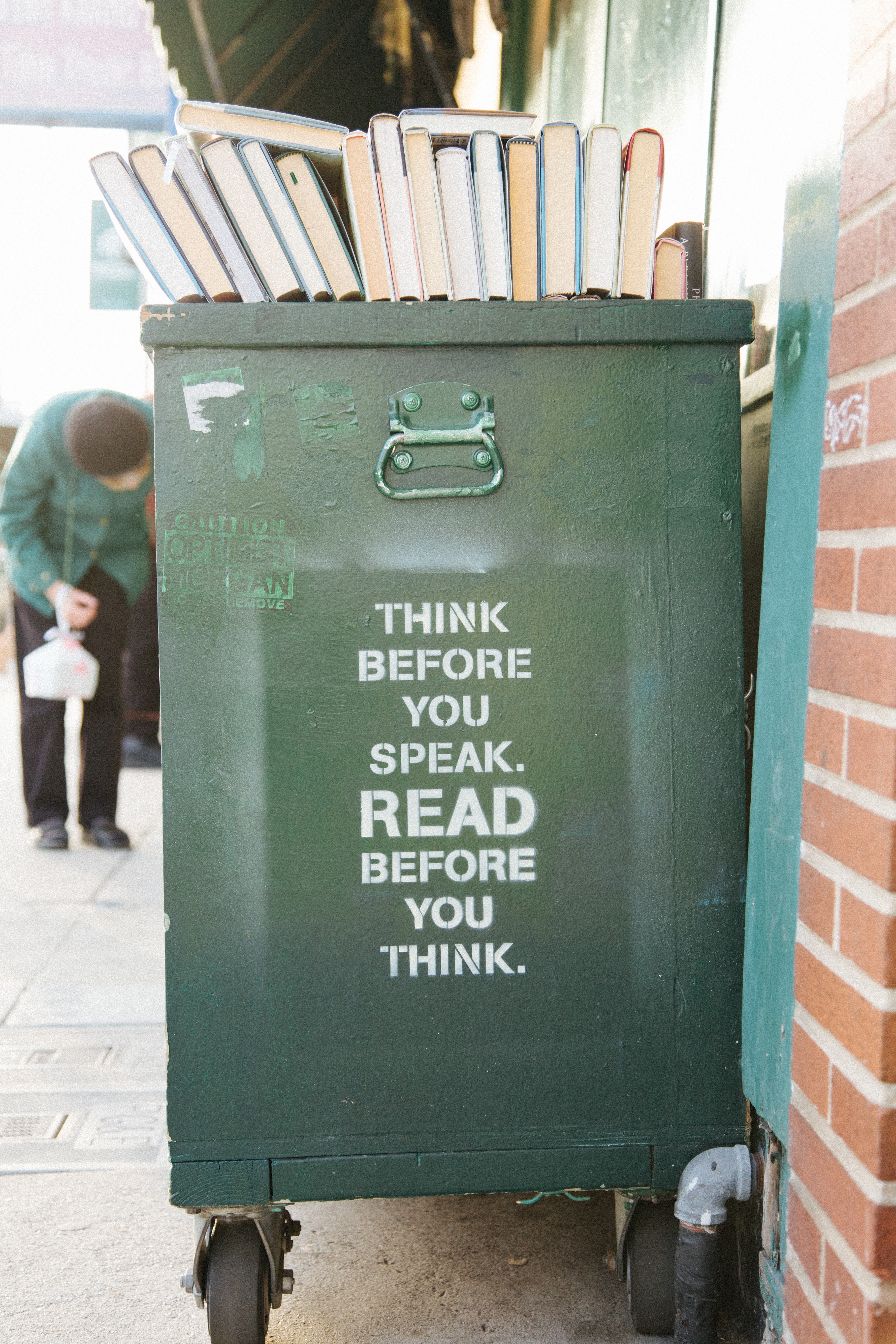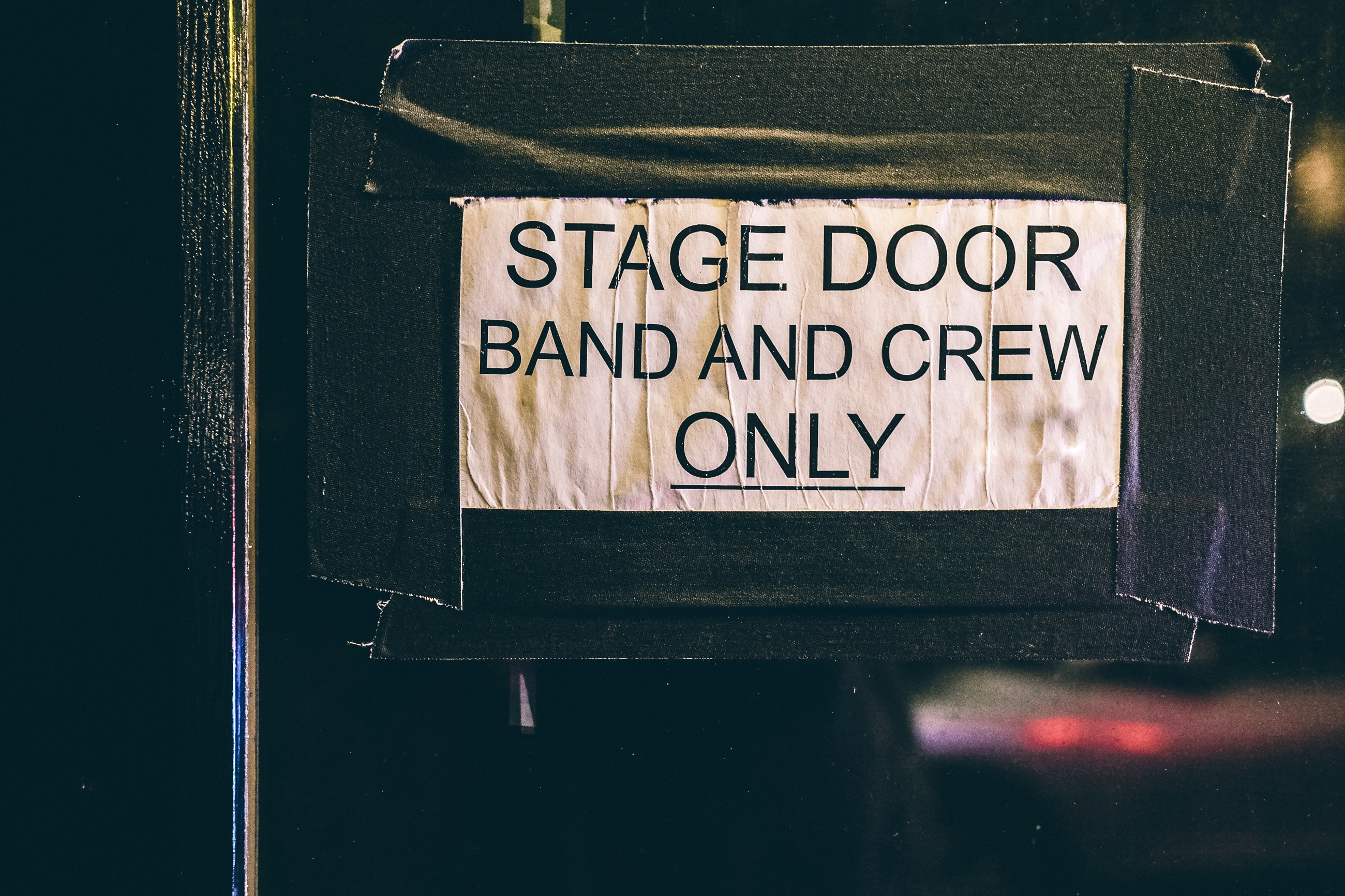The State of the Art | Race and gender in American theatre.
The American theatre industry remains a white, male-centric institution in 2018, despite an increasing awareness of racial and gender disparities amongst regional theatres.
If you’re paying attention to the world in which we live, it should come as no surprise to you that this is the case. America has a deeply embedded history of systemic racism and gender discrimination that we are still recovering from. Our nation’s fabric has been stained with continued traumas and injustices. (FYI: All images from Unsplash)

Despite the artist community being progressive and “bohemian” the same patterns are perpetuated in our ranks. Theatres are quick to say “the talent just isn’t out there” or that qualified individuals “lack the proper training”.
I have heard Board members in rooms I have sat in honestly ask the question, “Can we pursue artistic excellence and racial equity at the same time?” The answer is most obviously and emphatically YES.

Unfortunately, the American theatre has been weakened by its exclusion of narratives that divert from the mainstream white-European, hetero, male-dominated stories we are used to seeing. Even when women are featured, it is often their relationship to a man that gives them value. Check out my recent Bechdel Con(test) for more on that!
Theatres are struggling to sell tickets and remain relevant. There is a tendency to program old material and then be confused when it doesn’t land with your community and result in an overflowing audience. The world is changing. In just a few decades white folks will not, for the first time, be the majority in the US. If arts institutions -- and especially theatres -- want to remain relevant and sell tickets for years to come they need to expand what they are offering!

On May 24, 2017 Actor’s Equity posted a formal racial equity study: Equity 2020
Here is the statement about the study from Actor’s Equity Executive Director, Mary McColl:
This issue of Equity News is groundbreaking for our union. We have spent months researching the makeup of our membership and who is getting hired. This research started by looking at gender parity in hiring. It then expanded more broadly to include the entire membership. The results, empirical and difficult to confront, show that institutional hiring bias exists in our industry. Something that we instinctively knew was true is proven out and now we are publishing that data.
We are publishing this data not to place blame, but to start an overdue conversation about how we move forward as an industry to make sure the stage is more inclusive. This work matters— not just for Equity and our membership, but to ensure that live theatre remains relevant for the next generation of artists and audiences.
If you work in any creative field, or human resources, I cannot encourage you enough to read the full study. Yes, you can likely guess at the findings and content, but the data tells a story that cannot be misunderstood. Inequity exists.

In June 2017, The New York Times picked up this study and wrote an incredible summary piece you may also enjoy: Theater Jobs Skew White and Male, Study Finds.
On Broadway and in national tours, where salaries are highest, women had 35 percent of the principal roles in plays and 42 percent of principal roles in musicals, and 37 percent of stage manager jobs. Even in chorus parts, women were underrepresented, at 44 percent.
Off Broadway, where salaries are lower, women are faring better: just 40 percent of the principal roles in plays, but 47 percent of the principal roles in musicals, 54 percent of the chorus roles, and 65 percent of the stage manager jobs.
For minorities, the numbers are lower: African-American performers, for example, got 11 percent of the principal roles in Broadway and touring plays, and 9 percent in musicals. Off Broadway, African-American performers did better: about 14 percent of the principal roles and 22 percent of chorus jobs. But Equity said that whites were generally hired with higher contractual salaries at all levels.

I’m not saying there aren’t incredible companies out there doing the work: Guthrie Theater, Steppenwolf, Mixed Blood, Intiman, Sojourn Theatre, and The Public are just a few names that immediately come to mind.
However, they stand as examples in a sea of regional theatres who are at a loss to connect to their changing communities. In my opinion, theatre was always an art form dedicated to the people. In its earliest form it was public-storytelling performed on the streets--a living history capturing the cultural zeitgeist. I would argue that this is still it’s purpose. I would argue that theatres have a responsibility -- as artists with a platform -- to program work that speaks to the world in which we live and strives to transform it.

I just went to prison for 5 months. Again. | 03
ART MIX-UP CONTEST | 02
ART DIGEST | 01




Very interesting, I'm glad that you brought this to our attention with your post. This is something I sort of vaguely think about but don't really know any specifics. Thanks for widening my sphere!
I like this -
Thank you so much for stopping by to read this. :) When this article came out a lot of folks were like “so what, it’s nothing we don’t know”, meanwhile I was jumping up and down because finally there was great hard data from a reputable source to point at for proof of what we had been saying!
hard data can be very useful and validating sometimes for sure!
This looks so familiar from SFF, with recent reports such as BlackSpecFic report and Natalie Luhrs' ongoing analysis of the Locus Recommended Reading List
Oh, I’m sure! The stats always tell the same story it seems, it’s just people that can’t seem to hear it...
Gotta protect white fragility and male fragility.
I like this writing, my friend. I learned something new. Thank you
Thanks for stopping by to read it, even though it’s not a “light” read. :)
You got a 2.29% upvote from @upmyvote courtesy of @sarasate!
If you believe this post is spam or abuse, please report it to our Discord #abuse channel.
If you want to support our Curation Digest or our Spam & Abuse prevention efforts, please vote @themarkymark as witness.
Hy! I am a bot and I find your post valuable for the art community! Thanks for great post! I follow you!
I am not familiar with the US theater industry (or any so to speak), but from what I have heard from the more popular movie industry and the salary reports from the BBC in the UK last year, it is shocking that the problem of gender inequality is in deed still a serious issue in this day and age
The theatre and film industries are VERY similar, although I’d argue it might be a bit worse in the theater even...le sigh.
Took the time to read this through again and intend to read Equity 2020. It's staggering how ingrained these patterns of discrimination and prejudice are in our HEADS, as well as in our culture/industry/daily life.
Growing up in a racist family, one that was kind and polite but when happened-upon by a person of color, there was always a comment to be made, I feel like I had to rewrite my thoughts into adulthood. No one called me out when I made a joke singling out a person's nationality, or making a remark about a person's race.
Over time, though, I realized how toxic the behavior was and that I needed to quit that if I wanted to become someone that was free of bias. Challenging our condition - be it cultural, racial, gender-bias, and religious, is the most important thing we can do as humans but it seems to be so deeply worn into the common perspective that it's taking literally hundreds of years to undo it.
Moral of my ranty/personal comment: Studies are great, organizations are swell. But, change starts with the individual on a daily, moment-by-moment basis of awareness and choice.